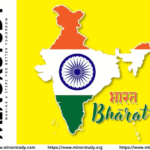🌿 Changri (चंगरी): The Forgotten Herb with Life-Changing Powers — Know Its History, Uses & Significance
In the vast treasury of Ayurveda and Indian folk medicine, some herbs may not make it to mainstream discussions, but their healing power is unmatched. One such hidden gem is Changri — an ancient, natural remedy used across generations, known for its soothing effects on the digestive system, skin, and liver.
- 📖 History of Changri in Indian Traditional Medicine
- 🕰️ Timeline – Journey of Changri through Indian Healing Traditions
- ✅ 5 Powerful Health Benefits of Changri
- 1️⃣ Relieves Gas, Indigestion & Stomach Pain
- 2️⃣ A Natural Remedy for Diarrhea
- 3️⃣ Improves Liver Function
- 4️⃣ Clears Skin Irritation, Pimples, and Itching
- 5️⃣ Acts as a Natural Blood Purifier
- 📚 Cultural and Religious Significance
- 🙏 Observance and Folk Traditions
- 🧠 FAQs – Everything You Need to Know About Changri
- ❓ Is Changri available in Ayurvedic stores?
- ❓ Are there any side effects of Changri?
- ❓ Can Changri be used daily?
- ❓ How is it different from neem or tulsi?
- ❓ Is it scientifically studied?
- 💐 Wishing for Your Health with Changri
- 🎯 Key Takeaways – Why Changri Deserves a Spot in Every Indian Household
- 🪔 Conclusion – A Forgotten Leaf with a Modern Need
With modern lifestyles bringing in more junk, stress, and imbalance, it’s time we rediscovered the power of nature’s simplest herbs like Changri.
Let’s explore the history, facts, uses, FAQs, timeline, health impacts, and cultural importance of this modest yet mighty herbal treasure in over 1200+ words.
📖 History of Changri in Indian Traditional Medicine
Changri is a wild medicinal herb found commonly in the foothills, rural plains, and forested regions of India — especially in tribal belts of Chhattisgarh, Jharkhand, Odisha, and Madhya Pradesh.
It is known by different names in local dialects, and its leaves, roots, or paste are used in home remedies passed down through generations. Though scientific literature on Changri is limited, its usage in ethnobotanical traditions has always been strong.
Ayurveda classifies herbs like Changri as “Krimighna” (anti-parasitic), “Pittahara” (relieving excess bile), and “Raktashodhaka” (blood purifiers).
🕰️ Timeline – Journey of Changri through Indian Healing Traditions
| Period | Milestone |
|---|---|
| Ancient Era | Used in rural India for indigestion, skin disorders, and diarrhea |
| Medieval Period | Adopted in tribal healing practices and forest remedies |
| 20th Century | Continued as household remedy, especially in interior villages |
| 21st Century | Being re-evaluated by herbal researchers and AYUSH institutions |
✅ 5 Powerful Health Benefits of Changri
Let’s explore why Changri is hailed as a multi-benefit plant:
1️⃣ Relieves Gas, Indigestion & Stomach Pain
Changri leaves, when crushed and boiled in water or taken as a chutney or paste, soothe the digestive tract, relieve acidity, and are especially effective after heavy meals or festival feasts.
🌿 Why it matters: In our fast-paced lives with oily, processed food, this simple herb brings balance back to the gut.
2️⃣ A Natural Remedy for Diarrhea
Tribal healers have used Changri roots mixed with buttermilk or warm water to treat loose motion and diarrhea.
Its anti-bacterial and anti-inflammatory properties help tighten the intestines, reduce water loss, and restore gut flora.
🌿 Pro Tip: A decoction of Changri with cumin can bring quick relief in stomach upsets.
3️⃣ Improves Liver Function
Changri’s compounds help in detoxifying the liver, increasing bile flow, and promoting better digestion and metabolism.
🌿 In folk tradition, it is often taken with goat milk or cow ghee to balance internal heat.
4️⃣ Clears Skin Irritation, Pimples, and Itching
Paste of Changri leaves is used on the skin to treat eczema, pimples, fungal infections, and even mosquito bites.
Its cooling effect soothes itching and purifies the blood, thereby reducing recurrence.
🌿 Skincare tip: Mix Changri leaf paste with neem and turmeric for an effective herbal face mask.
5️⃣ Acts as a Natural Blood Purifier
Changri is known to cleanse toxins from the bloodstream, support healthy blood circulation, and prevent boils and skin eruptions.
🌿 Why it’s powerful: Blood purification helps prevent many chronic diseases, including skin issues, fatigue, and hormonal imbalances.
📚 Cultural and Religious Significance
While not worshipped as a sacred plant, Changri’s folk importance lies in its role in rural health care.
In many tribal regions:
It’s part of postnatal diets for mothers.
Used in ritual baths before festivals like Hariyali Amavasya.
Added to food during seasonal transitions (especially monsoon) to prevent illness.
This shows its integration with seasonal health practices of Sanatan Dharma.
🙏 Observance and Folk Traditions
In tribal belts, people still:
Offer Changri decoction to guests suffering stomach disorders.
Use it in ritual steam when children have colds.
Dry and store its leaves for winter remedies.
Its presence in kitchen gardens and forest medicine systems highlights its folk sustainability.
🧠 FAQs – Everything You Need to Know About Changri
❓ Is Changri available in Ayurvedic stores?
Not widely, but some ethnic herbal stores and local haat bazaars in rural India may sell it in dried or powdered form.
❓ Are there any side effects of Changri?
Generally safe in small quantities, but pregnant women or those on medication should consult a vaidya/doctor.
❓ Can Changri be used daily?
Yes, but ideally in moderate amounts. Overuse may lead to excessive detoxification or acidity in sensitive individuals.
❓ How is it different from neem or tulsi?
While neem and tulsi have anti-viral and anti-fungal effects, Changri focuses more on digestion, skin, and liver purification.
❓ Is it scientifically studied?
Limited peer-reviewed studies exist, but field-based research by AYUSH and forest research institutes is ongoing.
💐 Wishing for Your Health with Changri
“May nature’s simple wonders like Changri keep your stomach light, your skin glowing, and your soul refreshed.”
Celebrate traditional healing wisdom by embracing herbs like Changri in your kitchen and lifestyle.
🎯 Key Takeaways – Why Changri Deserves a Spot in Every Indian Household
| Benefit | Impact |
|---|---|
| 🌿 Digestive Health | Relieves gas, indigestion, pain |
| 💧 Anti-diarrheal | Controls loose motions effectively |
| 🧠 Liver Support | Boosts detoxification naturally |
| 🌸 Skin Health | Heals pimples, itching, rashes |
| 🩸 Blood Purification | Reduces toxins and enhances immunity |
🪔 Conclusion – A Forgotten Leaf with a Modern Need
In an age of over-the-counter pills and synthetic drugs, it’s high time we turned back to the green pharmacy of our ancestors. Changri is more than a herb — it is a symbol of India’s healing heritage.
Reintroducing such herbs into our diet and home remedies means:
Healthier living
Cost-effective treatments
Reviving our ancient wisdom
Supporting local herbs and biodiversity
Let’s rediscover and respect the magic of Changri — a small herb with big healing energy.








